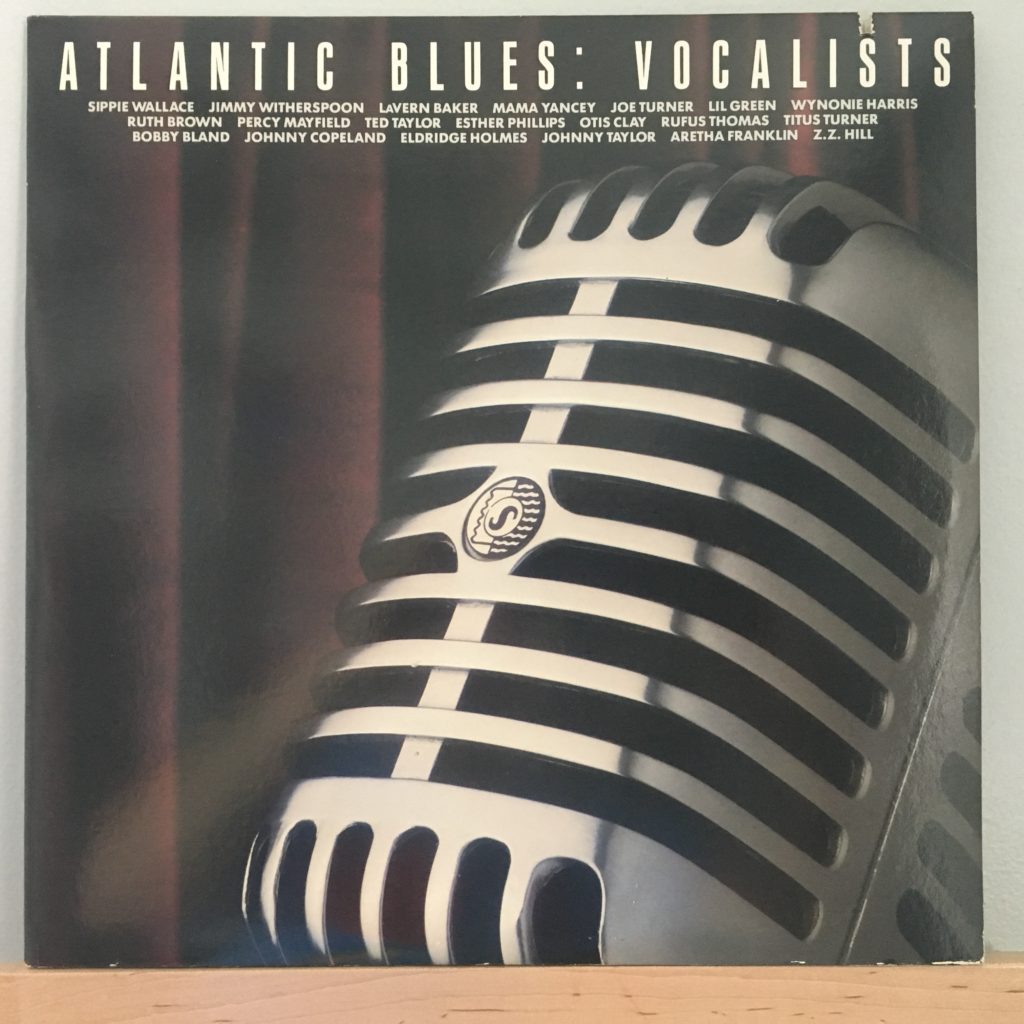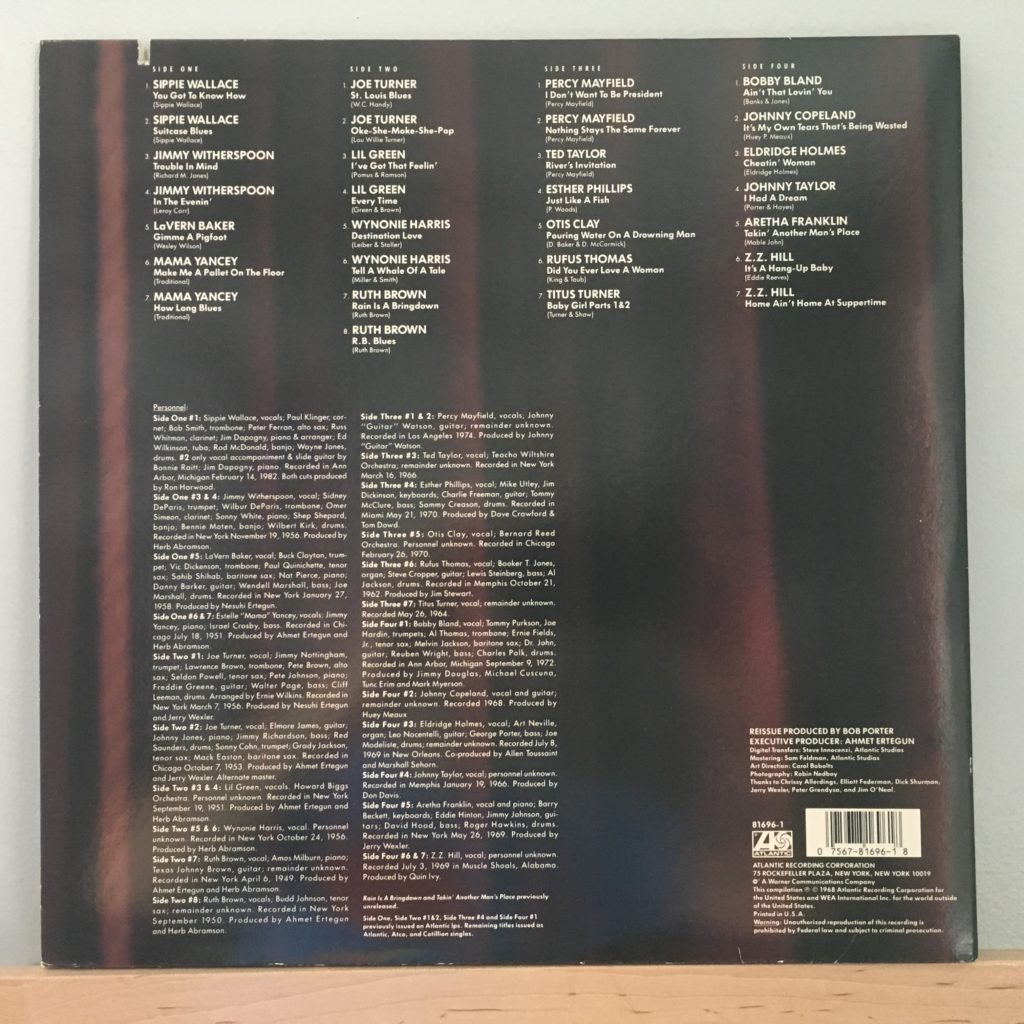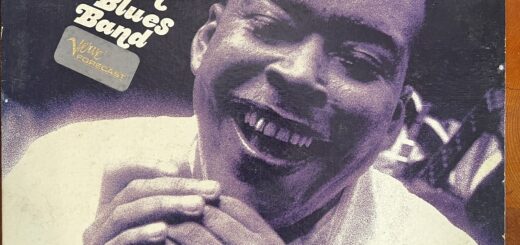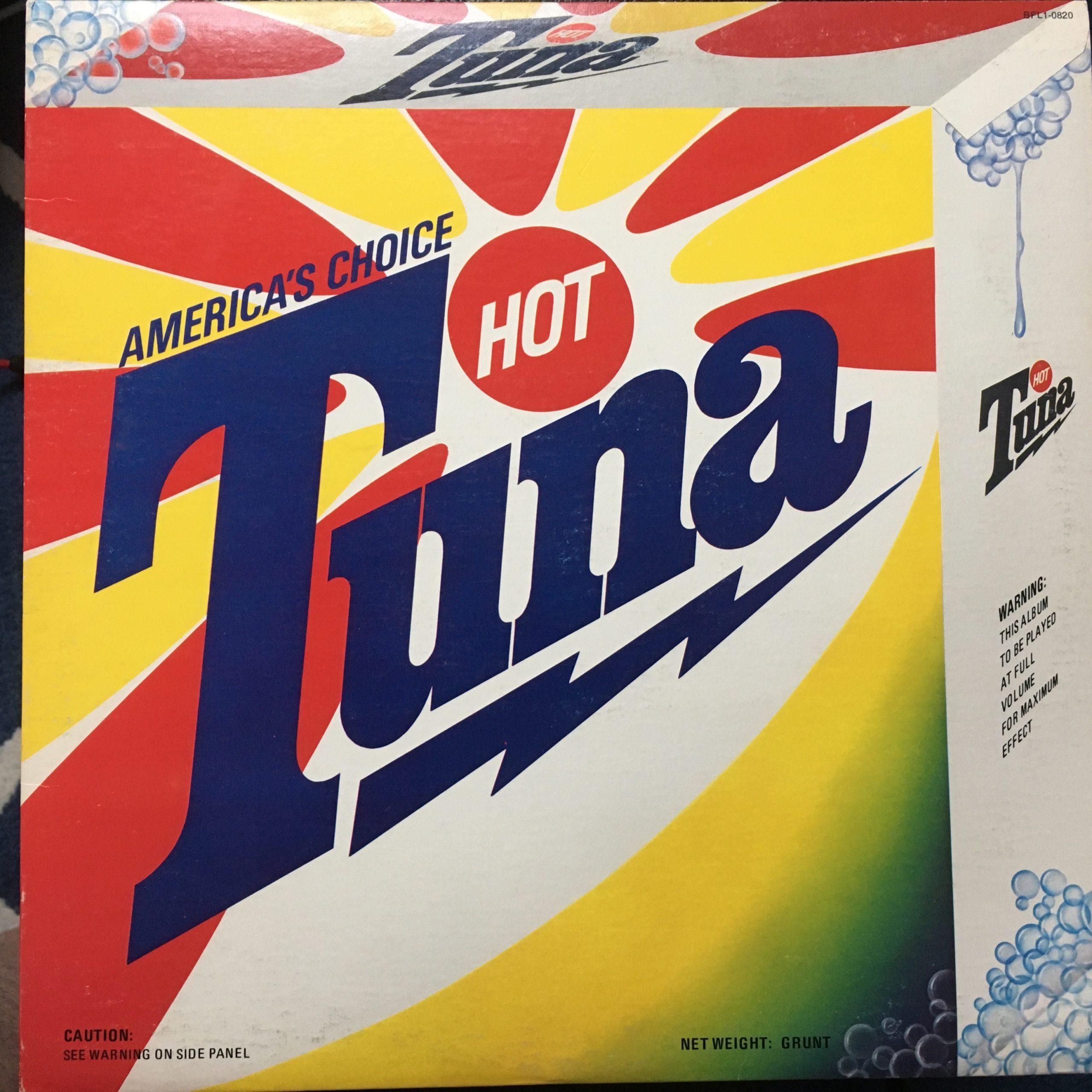Atlantic Blues: Vocalists
“Atlantic Blues: Vocalists,” like the previous album (“Atlantic Blues: Piano”), came out in 1986. It is every bit as good as the piano collection — a little less broad in range, but with significantly more female participation. This introduced me to the likes of Sippie Wallace, Mama Yancey, LaVern Baker, and Ruth Brown — and on the male side, Percy Mayfield, Otis Clay and more. There’s an even a great blues by Aretha Franklin, who was such a force of nature that it’s hard to associate her with a genre. For me, this is perhaps not as perfect a collection as the piano collection — there are tracks I could do without — but it was, again, a fantastic introduction to a number of artists and styles of the blues that I wasn’t familiar with at the time, and it led me into a deeper appreciation of the blues that would take up a fair amount of my CD collection in the coming years.

Greatest hits and compilations get a bum rap — sometimes deserved, sometimes not. When done right, a compilation will have a few familiar pieces to draw the listener in, and then some deep tracks to show what the artists were capable of. These Atlantic collections are perfect in that regard.
And again, a class cover.

Both this and the Vocalists volume have excellent liner notes, by the way. There is a wealth of information about these artists, all helpful for someone wanting to know more about where to go next in listening to the blues.
I bought these brand new(ish) somewhere in Syracuse, but I couldn’t promise you where. I have an odd feeling it was downtown, perhaps at the Record Town — which would be unusual, I hardly ever bought anything there. Record Town was by far the highest priced place to buy records, and about the only use I had for the downtown one was browsing after we had been to the Economy Bookstore next door, and picking up discounted 45s. The “ish” qualifier on the new is just because apparently this copy was sold as a cut-out, meaning it had been discontinued and was no longer in the catalog (theoretically) and should be sold at a discount – and some kind of physical mark, usually a notch or a hole punched completely through the album cover, would mean the record couldn’t be returned to the wholesaler. But I can’t have bought this much later than 1987, and its companion album was not a cut-out, so who knows why this was on discount, but it was pretty much a freshly released record when I got it.



Things We Said Today